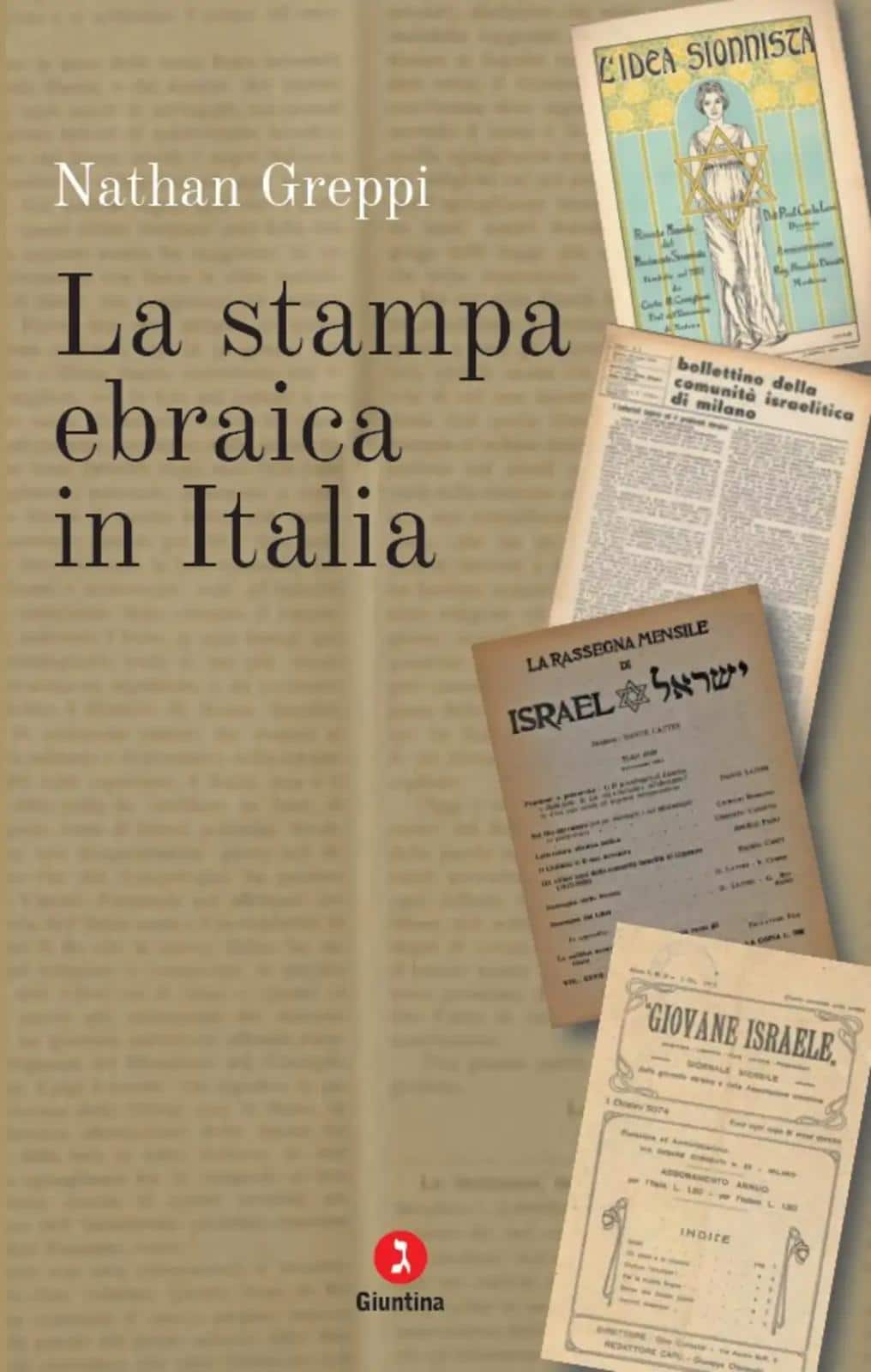The history of the Jewish communities in Italy, as is well known, has very deep roots. A constant presence since Roman times, which has accompanied, followed and suffered the fortunes of the Peninsula. A presence whose numbers and industriousness have been conditioned by history, in which watershed moments such as 1492 or 1938 stand out.
A profound bond, both in the sense of complexity and rootedness, and in the spatial and dimensional meaning of the term. Never as much as today, in the frenzy and intolerance that characterise our age, to dig and delve deeper without contenting oneself with reflecting on the surface of things, is now considered almost a retrograde vice. In such a context, it is evident that it is not easy to produce an essay that combines the genre's need for analysis with the languages of contemporaneity.
‘La stampa ebraica in Italia’ written by Nathan Greppi for the Giuntina publishing house is certainly a text that achieves the objective by presenting itself to the reader, even the non-specialist, as a valid historical reconstruction of the printing activity carried out by the Jewish communities scattered throughout the Peninsula.

Nathan Greppi, “La stampa ebraica in Italia”, Giuntina, 236 pages, € 18,00
Greppi's essay is first and foremost an accurate research of academic value, which neatly reconstructs the appearance and alternation of all the journalistic publications held by Italian Jewish editorial offices, but not only. ‘’La stampa ebraica in Italia‘’ is above all a history of Italian Jews and their peculiar history, but it is also a history of Italy. From the expectations of the Jews on the heels of the completion of the Risorgimento process to the hopes placed in the newly-born Kingdom of Italy, from the uncertainties of the First World War to the contradictions of the twenty years of Fascism, from the Holocaust to the birth of the State of Israel, the tortuous path of Italian Jews is inextricably linked to the history of Italy.
Nathan Greppi's text, reviewing each editorial office, clarifying its editorial line and tracing the profiles of directors and editors, returns a vivid portrait of a specific community - the Italian Jewish community - and of an entire people - the Italian people.
As the history of an ethnic-religious community, the dilemma between assimilation and preservation of identity certainly stands out in Greppi's essay, that is, between the preservation of one's own culture - rightly perceived as unique - and the attraction exerted by the ‘new’ homeland. A tension that accompanies Italian Jews throughout their history, which is reflected in the editorial choices of the Jewish press, and which perhaps finds its main fault line with the birth and establishment of Zionism.
As a history of a community of Italians, starting with the first newspapers born in pre-unification Italy, ‘La Stampa ebraica in Italia’ brings to the fore the question of the different degree of tolerance and inclusion to which Jews were exposed, to continue with the completion of unification and the fall of the Papal States, in which the expectations of secularism and emancipation, which until then had been practically unhoped for, emerge. Also central is the First World War, which saw the major Jewish newspaper signatures reflect on whether or not to join the Italian patriotic impulse, as is the twenty years of Fascism, which in the early years marked a not insignificant Jewish adhesion, and which would later see the great Jewish contribution to the Resistance.
Hence, the renewal of newspapers and editorial lines once again reflects the internal dynamics of a community increasingly linked on the one hand to Italy and on the other to the State of Israel. Zionism and anti-Zionism, both right-wing and left-wing, are certainly the positions that divide and characterise Jewish newspapers, for an issue of existential significance that will never cease to be relevant, as 7 October 2023 frighteningly demonstrates even today.
From ‘La Rivista Israelitica’ (Parma, 1945) by Cesare Rovighi, a decorated officer who fought in the three Wars of Independence, to ‘L'educatore Israelitico’ by Giuseppe Levi and Esdra Pontremoli (Vercelli, 1953), from ‘La Settimana Israelitica’ (Florence, 1910) by Samuel Hirsch Margulies to ‘La Nostra Bandiera’ (Turin, 1934) by Ettore Ovazza, from ‘Ha-Tikwà “ (Genoa, 1949) the official organ of the Federazione Giovanile Ebraica d'Italia to the renaming of the ”Bollettino’ (Milan, 1945) into ‘Bet Magazine ’ directed by Fiona Diwan, the long journey recounted with precision by Nathan Greppi leads to the advent of TV and the web. The Jewish press in Italy obviously also opened up to the new channels, both with the forty-year-old RAI programme ‘Sorgente di Vita’, and with the various online realities, such as ‘Progetto Dreyfus’ directed by Alex Zarfati, ‘Informazione Corretta’ directed by Deborah Fait, ‘L'Informale’ directed by Niram Ferretti.
Although it deals with a specialised subject, ‘La stampa ebraica in Italia’ is of interest to any type of audience, if ‘typologies’ and ‘classifications’ are permissible to speak of when reading. In addition to a detailed review of all the Jewish journalistic realities that have appeared in Italy since the Risorgimento, Greppi's essay is a way of retracing the Italian history of the last 160 years through an unusual lens, that of the Jewish communities. A point of view whose exceptionality makes the journey new and interesting, even for those who do not belong to that community. Further merit of the text is certainly also that of highlighting - alas once again - the bitter current resurgence of anti-Semitic hatred and violence in Italy, in a perverse mechanism that sees the Italian media and press all too often complicit, moving maliciously in that grey terrain that confuses ideals and obfuscates truth. A perverse process that must be stopped once and for all with the contribution of everyone, media and newspapers in primis.
Bachelor's degree in Communication, Publishing and Journalism (Sapienza University of Rome), Master's degree in Business Communication (University of Salerno), postgraduate course in Economics (University of Parma). He deals with marketing and business development in Italy for a small foreign company. Passionate about sociology, media and politics, he studies the emerging cultural and subcultural phenomena among young westerners.









Scrivi un commento